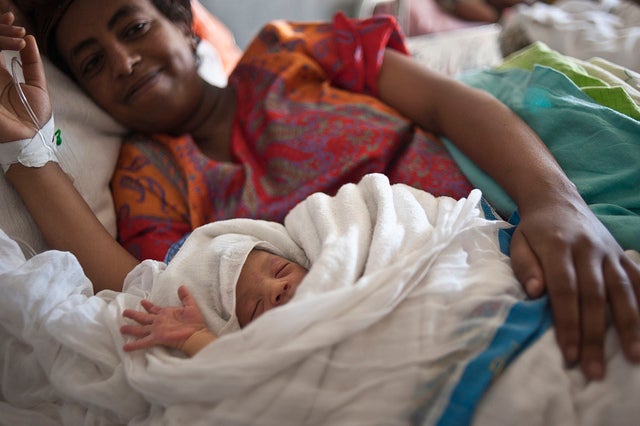So the Millennium Development goals are gone and now we have a new song, perhaps a pleasant one but also a less clear song than that of the MDGs. This new song is that of the Sustainable Development Goals (SDGs). The SDGs are about everything but in health we have only one of 17 goals, Goal 3: Ensure healthy lives and promote well-being for all at all ages.
Within this goal, there are targets for neonatal mortality (10 deaths per 1000 live births), stillbirths (10 per 1000 live births) and maternal mortality (70 deaths per 100,000 live births) to be achieved by all countries by 2030. These targets are even more ambitious (and challenging) than the MDG targets, yet the world is currently more economically constrained than before. So how will low-income countries manage the maternal and newborn related targets? Do they or does the global community know what it will take?
The first post-MDG Global Maternal Newborn Health Conference (GMNHC) will be held in Mexico City from 18-21 October 2015. This will be the first technical conference after the adoption of the SDGs. The conference will have three major themes: quality care, integration and equity. These are very good themes that could be critical to guide on how we navigate the SDG-era. Like others elsewhere, we in the low-income countries will be watching to see what comes from this convening of leaders. What do I hope to see at the conference?
One I expect that participants from low-income countries use the voice they have and that the global community listens. In the past, it has been routine for the “experts” in the global community to lecture the rest of the world on what has not progressed well, the remaining burden and what needs to be done. In my opinion, it is a shared responsibility, and no one understands context more than those who live and work it. Besides, there is already a lot of capacity in low-income countries, but the remaining challenge is how to harvest and enhance this capacity. What will be the position of the conference on utilizing and strengthening local capacity?
Secondly, there is a lot of talk and writing on the fact that most needed interventions are known, and that the challenge is implementation so that we close “the know-do-gap”. As a person who lives in Uganda, I would like to see that there is clear guidance coming out from the conference on how to operationalize quality care, integration and equity in low-income countries. Does anybody or those attending the conference know what it takes? To reduce maternal and newborn deaths takes more than interventions.
In countries like Uganda, high fertility, a double burden of disease (infectious and non-communicable) and neglected or inadequate investment means that delivering services such as skilled birth attendance, Cesarean sections for emergency obstetric care, kangaroo mother care, and essential and emergency care for sick newborns is a huge challenge. In fact, any effort to increase access to emergency obstetric care is already negating proper postnatal and postpartum care as mothers have to be discharged early to provide space “for more important” conditions. I hope the conference will bring out practical approaches to addressing such issues.
Finally, in the past we have seen that global priorities have driven interventions in countries. For instance, the world has been prioritizing HIV/AIDS and malaria, with maternal and newborn health left behind even though it is a major contributor to the burden of disease. At GMNHC I would like to see a clear strategy on how both the global and country stakeholders are going to commit or be engaged to ensure achievement of quality care, integration and equity.
Photo: “Dessie Referral Hospital in Afar region, Ethiopia” © 2012 Michael Tsegaye/Save the Children, used under a Creative Commons Attribution license: http://creativecommons.org/licenses/by/2.0/

